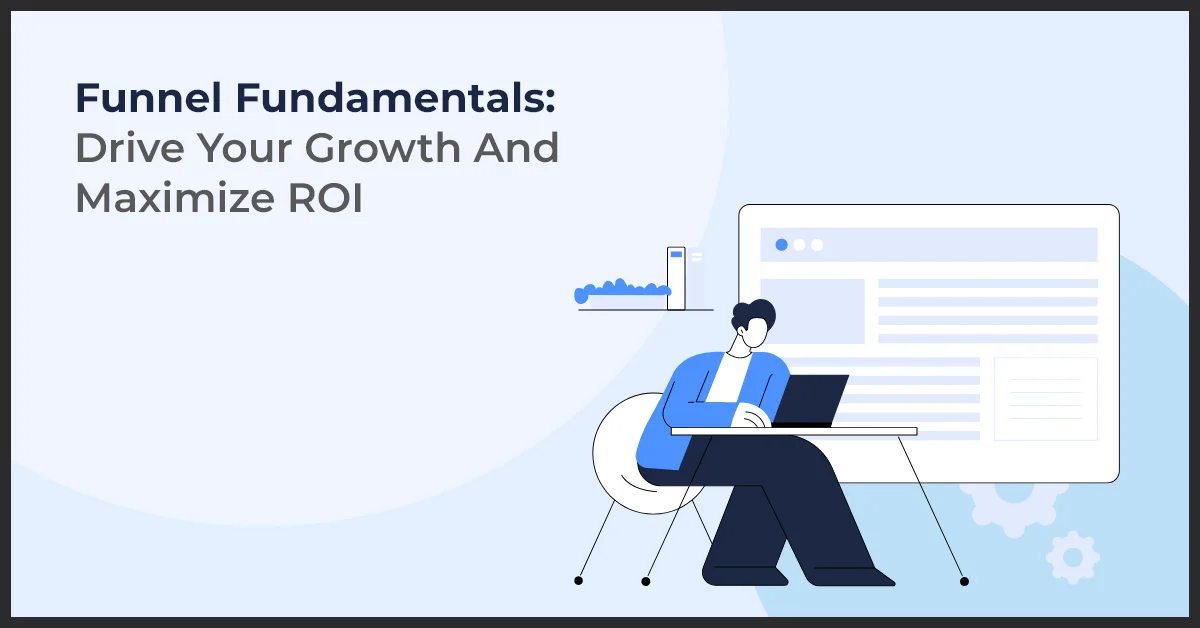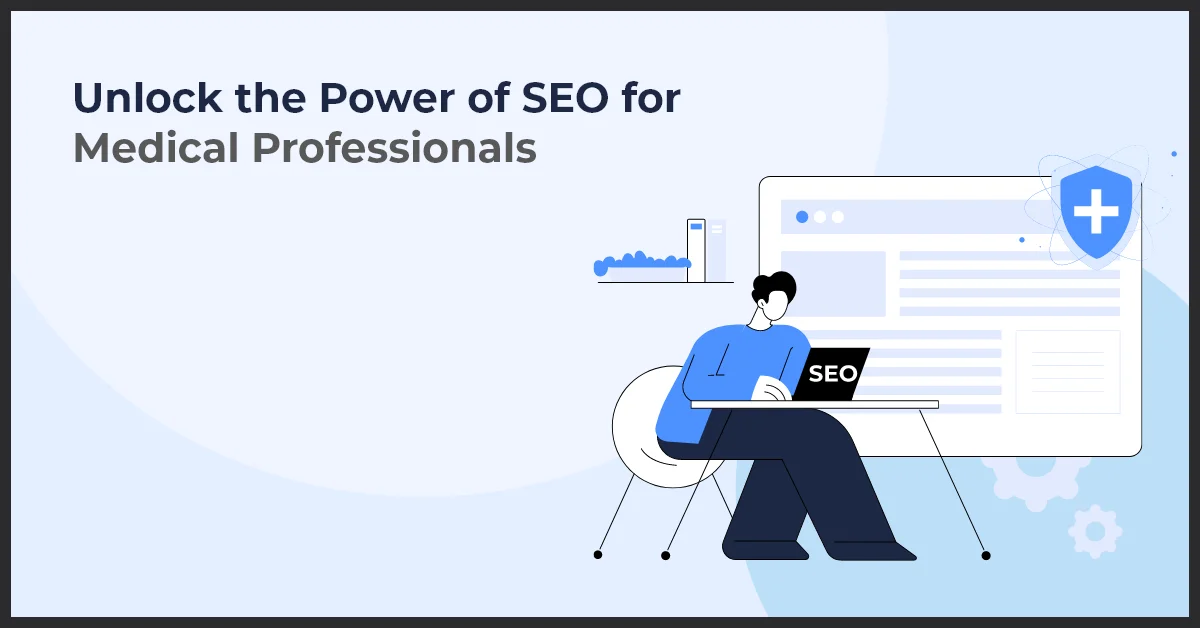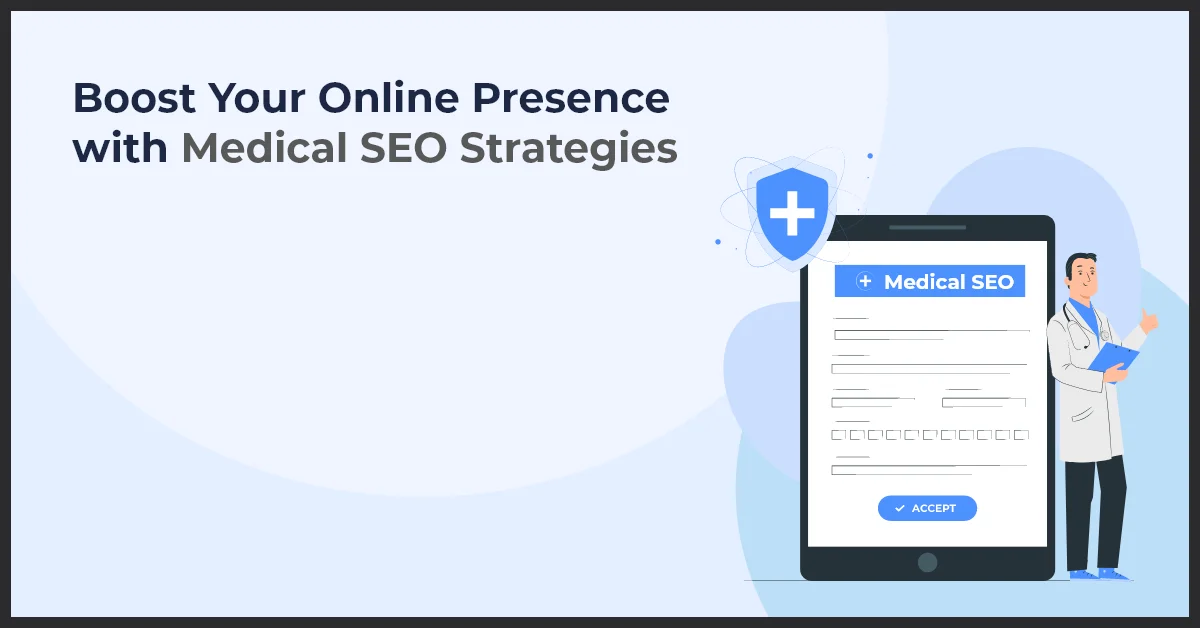Funnel Fundamentals: Drive Your Growth And Maximize ROI

Published on: September 17, 2021
Updated on: July 12, 2024
2058 Views
- Digital Marketing
16 min read
Understanding the Customer Journey
A. Definition and significance of customer journey mapping
Customer journey mapping is a strategic process that involves visualizing and understanding the various touchpoints and interactions a customer has with a business or brand throughout their buying journey. It helps identify key moments and emotions experienced by customers, enabling businesses to deliver tailored experiences and address pain points.
By mapping the customer journey, businesses gain valuable insights into their customers' needs, preferences, and behaviors, allowing them to optimize marketing efforts and improve overall customer experience.
B. Mapping the stages of the customer journey within a growth funnel
The customer journey within a growth funnel typically consists of four key stages:
Developing an Effective Marketing Funnel
In order to achieve sustainable growth, it is essential to have an effective marketing funnel in place. A marketing funnel is a strategic framework that guides potential customers through each stage of the buying process, ultimately leading to conversion and revenue generation. In this section, we will explore the key components of a marketing funnel and best practices for its development.
A. Overview of marketing funnels and their role in growth strategies
Marketing funnels play a crucial role in growth strategies by providing a systematic approach to generate leads, nurture prospects, and convert them into paying customers. They help businesses align marketing efforts with specific goals and target audiences, allowing for more targeted and effective campaigns.
B. Key steps and best practices for creating a marketing funnel
Optimizing Conversion Rates within the Funnel
Optimizing conversion rates within the growth funnel is crucial for driving business growth and maximizing revenue. By strategically fine-tuning your marketing efforts, you can ensure a higher percentage of potential customers convert into paying customers. Here are some key strategies to help you optimize conversion rates:
A. Conversion rate optimization (CRO) - definition and significance
Conversion rate optimization (CRO) refers to the process of improving the percentage of website visitors who take desired actions, such as making a purchase or filling out a lead form. It is a fundamental aspect of any effective marketing strategy, as it directly impacts a company's bottom line.
B. Key CRO strategies to maximize conversions
To optimize conversion rates within your growth funnel, consider implementing the following strategies:
- A/B testing and user experience optimization: Conduct A/B tests to compare the performance of different variations of your website or landing pages. By optimizing user experience and addressing any pain points, you can enhance conversion rates.
- Effective call-to-action (CTA) design and placement: Craft compelling CTAs that clearly communicate the desired action and place them strategically throughout your funnel. Use contrasting colors and persuasive language to drive conversions.
- Personalization and targeting techniques: Utilize customer data and segmentation to offer personalized experiences. Tailoring content, offers, and recommendations based on individual preferences can significantly increase conversion rates.
- Conversion tracking and analytics tools: Implement reliable tracking and analytics tools to monitor and measure conversion rates at various stages of the funnel. This data will provide valuable insights and help identify areas for improvement.
By incorporating these CRO strategies into your growth funnel, you can optimize conversion rates and drive sustainable business growth.
Streamlining the Sales Process
Within a growth funnel, the sales process plays a crucial role in converting leads into paying customers. By streamlining this process, businesses can ensure a more efficient and effective sales journey.
Sales process overview within a growth funnel
In a growth funnel, the sales process refers to the series of steps taken to guide a lead through the buying journey. It starts from the initial contact made by the lead and ends with the successful sale.
The sales process is an integral part of the growth funnel, as it helps businesses identify qualified leads, build relationships, and ultimately close deals.
Essential steps for an efficient sales process
- Lead qualification and nurturing: To streamline the sales process, it's essential to identify and prioritize leads that are most likely to convert into customers. This involves assessing their needs, budget, and readiness to make a purchase. Nurturing these leads with personalized content and targeted communication can increase their likelihood of converting.
- Sales pitch and value proposition: A compelling sales pitch and a strong value proposition are crucial for convincing leads to choose your product or service. By clearly communicating the benefits and unique selling points, businesses can streamline the decision-making process and overcome any objections.
- Handling objections and closing the sale: Addressing objections and concerns is an integral part of the sales process. By actively listening to the lead's concerns and providing solutions, businesses can streamline the process by reducing friction and increasing trust. Once objections are overcome, closing the sale involves finalizing the terms and securing the purchase.
- Follow-up and post-sales relationship building: After the sale is made, it's important to follow up with the customer to ensure satisfaction and continue building a long-term relationship. By providing post-sales support and engaging with customers, businesses can streamline future sales processes and encourage repeat purchases or referrals.
By following these essential steps, businesses can streamline their sales process within a growth funnel, resulting in higher conversion rates and increased revenue.
Funnel Optimization for Enhanced Growth
Funnel optimization plays a crucial role in driving sustained growth for your business. By identifying and fixing bottlenecks, streamlining each stage of the funnel, continuously testing and improving, and leveraging automation and technology, you can create a highly effective growth funnel.
Importance of Funnel Optimization for Sustained Growth
Funnel optimization is essential for long-term success. It allows you to identify areas where potential customers may be dropping off in the journey, enabling you to make data-driven decisions to improve their experience. By optimizing your funnel, you can maximize conversion rates and ultimately drive more revenue.
Strategies for Funnel Optimization
1. Identifying and fixing bottlenecks: Use analytics and testing tools to identify areas where customers are not progressing through the funnel. Once identified, address these barriers to ensure a smooth and seamless customer journey.
2. Streamlining each stage of the funnel: Focus on optimizing each stage of the funnel to ensure efficient progression. Provide relevant and valuable content, simplify forms and checkout processes, and remove any unnecessary steps that may cause friction.
3. Continuous testing and improvement: Never stop optimizing. A/B test different elements of your funnel, such as headlines, copy, and call-to-action buttons. Collect data and analyze results to make data-driven decisions and continually improve your funnel's performance.
4. Leveraging automation and technology: Utilize automation tools to streamline processes, personalize customer experiences, and nurture leads. Use technology to automate repetitive tasks, segment your audience, and deliver targeted content for increased engagement and conversion.
By implementing these strategies, you can enhance your growth funnel and drive continuous growth for your business.
Customer Retention Strategies for Sustainable Growth
Definition and significance of customer retention
Customer retention is the process of keeping existing customers engaged and satisfied to encourage repeat purchases and foster long-term relationships. It is a crucial aspect of sustainable growth as it costs less to retain customers than to acquire new ones, and loyal customers are more likely to recommend a business to others.
Effective retention strategies for long-term growth
Implementing effective customer retention strategies can help businesses achieve sustainable growth. Here are some strategies:
1. Personalized customer experiences
By understanding individual customer preferences, businesses can tailor their products, services, and marketing efforts to provide personalized experiences. This can be achieved through targeted email campaigns, personalized product recommendations, or customized promotions based on customer behavior.
2. Loyalty programs and rewards
Creating loyalty programs and offering rewards to repeat customers can incentivize them to continue choosing your business. This can include discounts, exclusive offers, points or rewards systems, or special perks for loyal customers.
3. Proactive customer support and communication
Ensuring excellent customer support is essential for customer retention. Promptly addressing customer inquiries, resolving issues efficiently, and providing proactive communication can help build trust and loyalty. Utilizing channels such as live chat, email, social media, or a dedicated customer support hotline can enhance the customer experience.
4. Upselling and cross-selling techniques
When customers have already made a purchase, businesses can utilize upselling and cross-selling techniques to increase their overall spending. This can involve suggesting complementary or upgraded products/services, offering bundle deals, or showcasing relevant add-ons during the checkout process.
Measuring Success and Revenue Generation
Measuring the success of your growth funnel is crucial for understanding how well your marketing and sales efforts are performing. Additionally, tracking revenue generation is essential for determining the return on investment (ROI) of your strategies. Here are some key steps to help you measure success and revenue generation within your growth funnel:
A. Key metrics and indicators for measuring growth funnel success
- Conversion rate: How many leads progress through each stage of the funnel
- Customer acquisition cost: The average cost of acquiring a new customer
- Churn rate: The percentage of customers who stop using your product or service
- Customer lifetime value: The total revenue generated by a customer over their lifetime
- Website traffic: The number of visitors to your website
- Click-through rate (CTR): The percentage of people who click on your call-to-action
B. Tracking revenue generation and ROI within the funnel
Setting revenue goals and benchmarks
Define specific revenue goals for your growth funnel, whether it's monthly, quarterly, or yearly targets. Set benchmarks to track your progress towards these goals.
Utilizing analytics tools for tracking revenue growth
Use analytics tools like Google Analytics or CRM platforms to track important revenue-related metrics, such as total revenue, revenue per customer, and revenue by channel. These tools provide valuable insights into which stages of the funnel contribute the most to revenue generation.
Analyzing customer lifetime value and acquisition costs
Calculate the average customer lifetime value by analyzing the revenue generated by a customer over their entire relationship with your business. Compare this with the average customer acquisition cost to understand the profitability of acquiring new customers.
Continuously improving revenue generation strategies
Regularly evaluate and optimize your revenue generation strategies. Test different offers, pricing models, and upsell opportunities to maximize revenue within your growth funnel.
Marketers can only excel when provided with information that directs them towards a precise goal. Analytics tops the chart of many marketers when creating a great marketing strategy and at the same time, they must include other factors as well.
One of these is understanding customer behavior, and it can be accomplished through building a marketing sales funnel. This is the reason digital marketers put more effort into analytics and sales funnels to form an effective strategy.
Including and implementing various strategies one by one provides marketers with massive benefits and when we talk about the marketing funnel, it itself is a series of strategic actions. In the customer behavior model, the sales funnel comprehends the thought process an individual goes through while interacting with a product, service, or brand.
Remember, delivering a positive customer experience should be the goal of your company as it goes hand-in-hand with the marketing sales funnel.
Accountability with the sales marketing funnel helps in understanding which route to take. It is easy to begin.
- Start by identifying the present channels for building the funnel
- Check the platforms created previously
- Look for the methods placed for nurturing a customer’s journey
- Analyze the previous KPIs to determine the effective channel
- Retest the non-performing channels for different funnel settings
- Make sure to test, assess, adjust, and retest the sales funnel
Each funnel has a huge impact on customer’s behavior, which is why it is essential to know the customer persona intricately. By using funnels, and knowing each step, it becomes easy to place the strategy in a way that will drive customers from one step to another.
Funnels surely have a compelling impact on any business.
Building Marketing Funnel for Long-Term Business Growth
The customer’s journey is depicted in your sales funnel.
Understanding your funnel assists several marketers in identifying its loopholes - the ones where prospects churn out from the funnel and never convert.
It is essential to build a sales funnel when the anticipated results are not achieved. Let’s see how it can be done!
Awareness
This is the time to grab the attention of potential and present customers. It can be through compelling content, attractive social media campaigns, tempting paid marketing strategy, or other tactics.
The motive is to make potential customers aware of your brand and the services/products you offer.
With the perfect timing and appropriate strategies, it is possible that the customers can make a purchase decision immediately. There is a probability that the consumer has already conducted their part of the research and is aware of your brand and services on offer at competitive pricing.
Awareness means to woo the potential customer in such a way that they re-engage with you by returning to your website and proceed to complete a purchase.
Interest
Taking the consumers to the interest stage itself is a difficult task. But once they reach this stage, the competition gets tough. Consumers begin to research more comprehensively, start comparing your offerings with competitors and sometimes even rethink their buying decision.
As a marketer, it is time to charm your potential customer with amazing content that helps them to reach a decision. Remember, the content should not be pushy. The motive here is to educate and encourage them to choose your brand.
Forcing your products or services to a customer will only drive them away. The goal here is to show how your product or service can be an asset for them. Work on helping them in forming a sound opinion of your brand while assisting them in every way possible.
Decision
This is the part where you need to swoop in your incredible expertise. The customer is ready to choose a brand and they might have two to three options in hand, which includes your product too.
Now is the time to offer the best offers to close the deal.
‘Make them an offer they cannot refuse’.
You can also incentivize the products, offer free shipping, discounts, sweepstakes, etc., and/or other bonus products to tempt them into clicking the buy button.
Regardless of what is added to the box, make sure the offer is irresistible and your customers will regret not taking advantage of it.
Action
This is the final part of the sales funnel and the customer is ready to buy your product or service and become a part of your brand’s network. Sometimes, marketers confuse action as the deal done stage, though it is the final part, and you will need to put in the same amount of effort as before.
Your aim should be to build long-term partnerships that will lead to the overall growth of a business. As a marketer, it is essential to do your best in selling your product or service to a customer and lay the foundation for repeat purchases.
Thus, the action step includes a hidden strategy, a plan to focus on customer retention. This can be easily done by adding reward points, expressing gratitude for becoming a part of your business, assisting them with customer support (if needed), and other foreseeable options.
Conclusion
The growth funnel is a powerful tool for businesses looking to drive sustained growth and increase revenue generation. Throughout this content, we have explored the various components and strategies involved in creating an effective growth funnel.
From understanding the customer journey to optimizing conversion rates, each step in the funnel plays a crucial role in guiding prospects through the buying process and ultimately turning them into loyal customers.
By implementing a strategic lead generation process and streamlining the sales process, businesses can ensure a steady flow of qualified leads and improve overall efficiency.
Funnel optimization is an ongoing process that requires continuous monitoring and testing. By utilizing customer retention strategies, businesses can foster long-term relationships with their customers and drive sustainable growth.
Measuring success and revenue generation is essential in evaluating the effectiveness of a growth funnel. By analyzing key performance indicators and leveraging data-driven insights, businesses can refine their strategies and make informed decisions.
In conclusion, growth funnels are a critical component of any business's marketing strategy. By leveraging the power of the growth funnel, businesses can attract, convert, and retain customers, driving sustained growth and success.
Recap of the significance of growth funnels for businesses:
- Guides prospects through the buying process
- Increases efficiency in lead generation and sales processes
- Optimizes conversion rates for better returns on investment
- Enhances customer retention and fosters loyalty
- Drives sustainable growth and revenue generation
Final thoughts on leveraging growth funnels to drive business growth:
Implementing a growth funnel requires strategic planning, continuous optimization, and a deep understanding of your target audience. By investing time and resources into building an effective growth funnel, businesses can unlock new opportunities and achieve long-term success.
Building a sales funnel is not an overnight job. It takes understanding, time, and a lot of hard work. But in order to survive and stand tall in this cut-throat competition, it is considered an optimal way.
The key to an attractive sales funnel is content. Create content that encourages customers in a positive way to move to the next step. When strategizing a funnel, it is essential to focus on details. A minute thing such as font size or content layout can dramatically impact the conversions.
Attracting customers to buy from you is the only way to make them connect. Focusing more on just selling will drive them away.
Take the time to create a marketing funnel that reflects both your company’s objectives and those of your target audience. Nurture it over time by making the essential adjustments to the strategic approach implemented at different phases of the sales funnel.
Furthermore, analyze your previous strategies and try to figure out why your efforts aren't succeeding, and optimize them to suit different funnel settings.
For more information about leveraging your sales funnel optimally and landing every lead, get in touch with our experts today at info@growthnatives.com. You can also go through our blog section to learn about different strategies and the latest trends in the marketing world.



